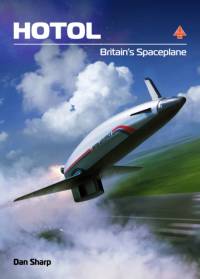Om HOTOL: Britain's Spaceplane
The start of Space Shuttle operations in 1981 marked a new era in spaceflight - with the five orbiters launching numerous satellites, interplanetary probes and the Hubble Space Telescope. But Shuttle was only partially reusable, its external fuel tank being expendable and its solid rocket boosters having to be recovered from the ocean and refurbished. Putting a satellite into orbit using a rocket was even more wasteful - with boosters such as Ariane being one-shot only. The costs were literally astronomical. So when rocket scientist Alan Bond met propulsion and systems specialist Bob Parkinson at the British Interplanetary Society in 1982 during a lecture on Ariane 5, they got to talking about alternatives to the expendable rocket and concluded that the solution was... an aerospaceplane. The concept was deceptively simple - a vehicle able to take off from a conventional runway, fly up into space, complete its mission, then fly back down and land. Bond and Parkinson believed it could be done and HOTOL - HOrizontal Take-Off and Landing - was born. By 1985 both British Aerospace and Rolls-Royce were backing the project. A television news broadcast in 1987 made HOTOL famous overnight, with the whole nation now aware of its existence. The Government agreed to provide yet more financial backing and the work ramped up into high gear, with some of Britain's best engineers engaged in making this remarkable vehicle a reality. Just a year later, Minister of State of Trade and Industry Kenneth Clarke, under pressure from Margaret Thatcher, withdrew funding - signalling the beginning of the end of HOTOL. Decades later, Elon Musk and SpaceX would finally corner the market in reusable space transportation with the Falcon 9 and Falcon Heavy, putting an end to any hope of a HOTOL revival. HOTOL: Spaceplane of the Future by Dan Sharp covers the full story of HOTOL's development in detail from beginning to end drawing on both the BAE Systems archive and the personal archives of the project's creators. It includes hundreds of previously unseen diagrams and illustrations, ranging from full colour brochures and publicity material - both used and unused - to schematics of all of HOTOL's numerous configurations.
Visa mer

